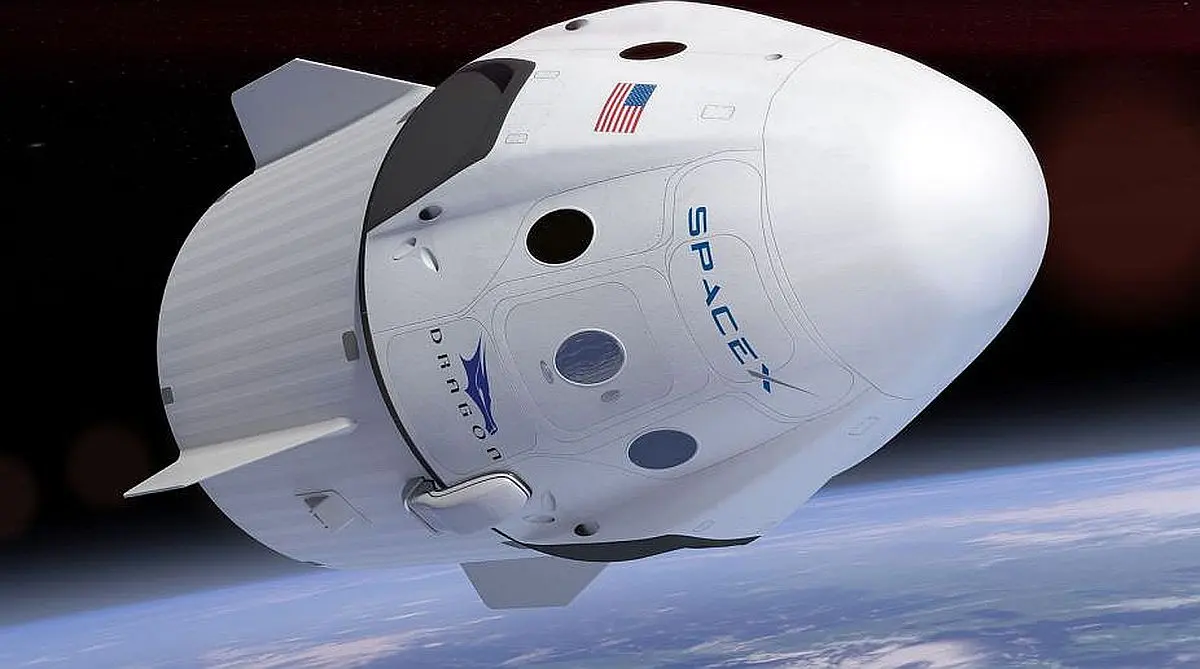
SpaceX’s Dragon spacecraft created a powerful sonic boom over California during its fiery re-entry from the International Space Station
Southern California’s quiet night was interrupted by a thunderous boom, shaking homes and startling residents. The cause? SpaceX Dragon spacecraft, making its dramatic return from the International Space Station (ISS). As the capsule re-entered Earth’s atmosphere, it broke the sound barrier, producing a sonic-boom that echoed across Los Angeles, San Diego, and neighboring regions.
While some initially mistook the boom for an earthquake, SpaceX had issued a pre-warning, advising that Dragon’s re-entry would be accompanied by a brief yet powerful sonic event.
What Caused the Sonic Boom?
A sonic boom occurs when an object moves faster than the speed of sound (Mach 1, approximately 761 mph or 1,225 km/h), generating shock waves that produce an explosive noise.
Dragon’s High-Speed Re-Entry:
- Traveling at over 17,500 mph, the Dragon spacecraft re-entered the atmosphere at extreme speeds.
- As the capsule descended, air resistance slowed it down, but it still exceeded Mach 1, creating a sonic boom.
- The geography of Southern California amplified the boom, making it widely heard across multiple counties.
Residents reported windows shaking and dogs barking as the boom reverberated across the region.
Dragon’s Mission: A Successful ISS Cargo Return
The SpaceX Dragon capsule had spent several weeks at the International Space Station, delivering scientific equipment, crew supplies, and experimental research materials.
Mission Highlights:
- Undocked from the ISS on May 24, 2025
- Carried over 6,700 pounds of cargo back to Earth
- Splashdown occurred at 10:45 p.m. PT near Oceanside, California
NASA and SpaceX confirmed the capsule’s safe recovery, marking another successful Commercial Resupply Services mission.
Public Reaction: An Unexpected Surprise
The sonic boom led to a surge of reactions on social media. Many Southern California residents initially thought they had experienced an earthquake, with some describing it as the loudest boom they had ever heard.
Social Media Responses:
- “Was that an earthquake or a SpaceX sonic-boom? Felt like an explosion!”
- “Windows rattled, car alarms went off, SpaceX knows how to make an entrance.”
- “That boom was LOUD. Never heard anything like it before!”
The event quickly became a trending topic, with news outlets covering the science behind sonic booms and SpaceX’s mission success.
Why Sonic Booms Are Common in Space Missions
Spacecraft re-entering Earth’s atmosphere at high velocities often create sonic booms, which occur when an object exceeds the speed of sound (Mach 1, approximately 761 mph or 1,225 km/h). These powerful shockwaves result in explosive noises that can be heard for miles. Sonic-booms are not accidental but rather a natural byproduct of high-speed travel. Here’s why they are common in space missions:
1. High-Velocity Atmospheric Re-Entry
Unlike airplanes, which cruise at subsonic speeds, spacecraft re-enter the atmosphere at extreme velocities often exceeding Mach 20 (15,000 mph or more). As they descend, they encounter dense air, creating compression waves that translate into sonic booms.
2. Shockwave Formation in Supersonic Travel
When spacecraft travel faster than sound, they push air molecules together, forming a shockwave barrier. These waves collapse and release energy explosively, producing the familiar booming noise heard on the ground.
3. Common Examples in Space Missions
- NASA’s Space Shuttle consistently created double sonic booms when landing, heard across Florida and California.
- SpaceX Falcon 9 rocket landings frequently cause booms when their boosters return to Earth.
- Supersonic aircraft, such as the Concorde and military jets, also generate sonic-booms when they exceed Mach 1.
4. Impact of Geography on Sonic Boom Audibility
Where a sonic boom is heard depends on geography. Coastal areas like California and Florida experience them more often due to spacecraft landing paths. Flat terrain and temperature changes can magnify sound waves, making booms more intense in certain locations.
5. Future Sonic Boom Events with Space Travel Expansion
As commercial space travel expands, sonic-booms may become more common, especially with missions like:
- SpaceX’s Starship returning from Mars
- NASA’s Artemis missions landing on Earth after lunar trips
- Hypersonic transport vehicles for space tourism
The world is entering an era where sonic booms will be a regular part of advanced aerospace developments, signaling the exciting progress of human space exploration.
The Future of SpaceX Dragon Missions
The successful return of Dragon reinforces SpaceX’s position as a leader in commercial space travel. With upcoming lunar missions and Mars explorations, the company is pushing the boundaries of human spaceflight.
What’s Next for SpaceX?
- Dragon spacecraft to continue ISS resupply missions
- Starship program developing for deep-space exploration
- Moon and Mars colonization plans accelerating
As SpaceX continues to innovate, future missions will bring even more dramatic re-entries, possibly accompanied by larger sonic booms.
Conclusion
SpaceX’s Dragon spacecraft made a thrilling return to Earth, startling Southern California with a powerful sonic -boom before splashing down in the Pacific Ocean.
While some residents mistook the boom for an earthquake, the event highlighted the excitement and unpredictability of modern space travel.
With SpaceX continuing to lead in aerospace innovation, sonic booms may soon become a common sound in California skies.
Also read – SpaceX Starship Flight 9 Set for May 28
2 thoughts on “SpaceX Dragon Sonic Boom Rattles California: A Spectacular Return to Earth”